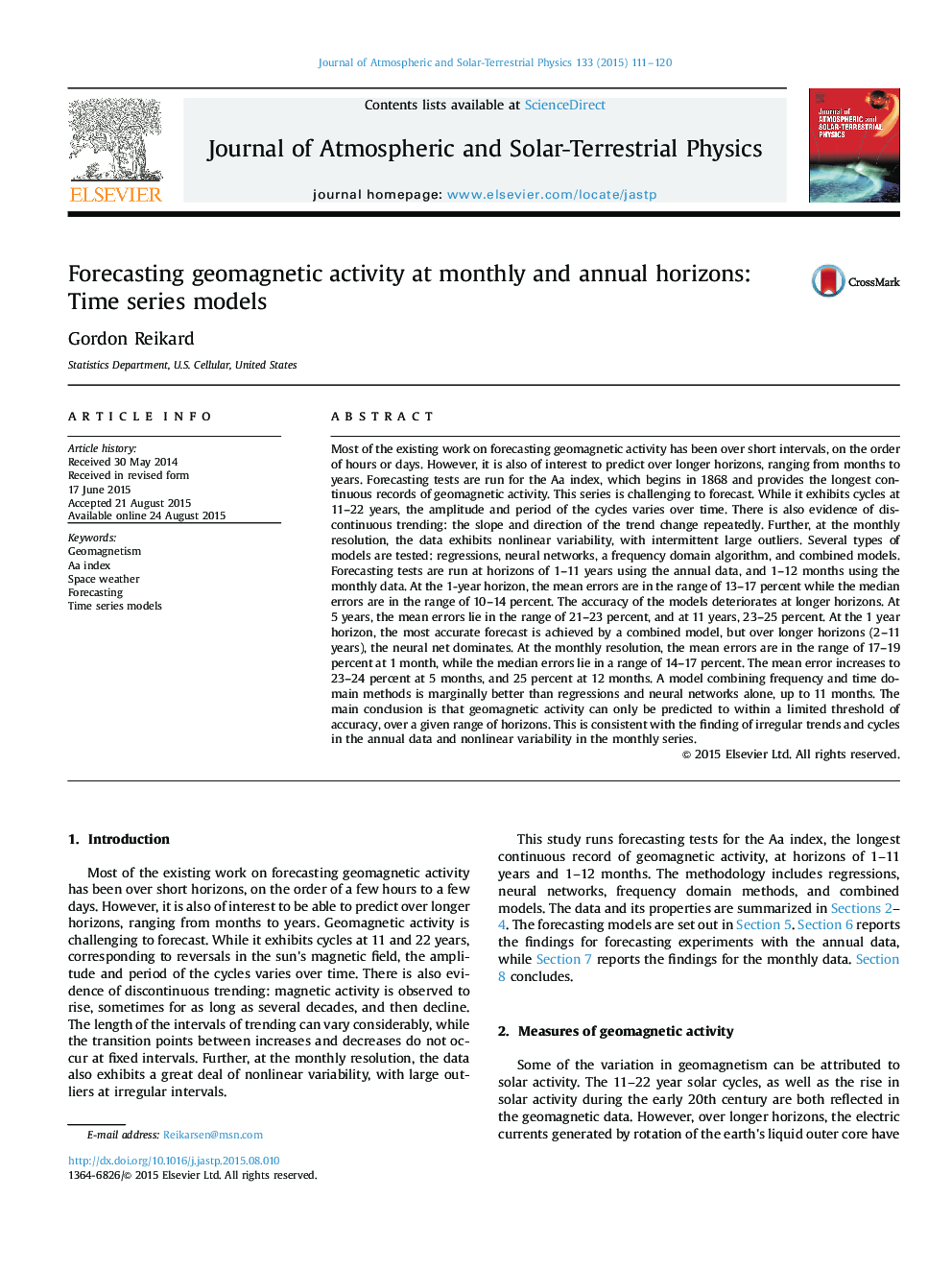| کد مقاله | کد نشریه | سال انتشار | مقاله انگلیسی | نسخه تمام متن |
|---|---|---|---|---|
| 1776404 | 1523611 | 2015 | 10 صفحه PDF | دانلود رایگان |
• Forecasting tests are run for geomagnetic activity, over months and years.
• The models include regressions, neural networks, frequency domain, and combined models.
• A key issue is that the amplitude of the cycles and slope of the trend have changed over time.
• The accuracy of even very sophisticated models is limited, particularly at long horizons.
Most of the existing work on forecasting geomagnetic activity has been over short intervals, on the order of hours or days. However, it is also of interest to predict over longer horizons, ranging from months to years. Forecasting tests are run for the Aa index, which begins in 1868 and provides the longest continuous records of geomagnetic activity. This series is challenging to forecast. While it exhibits cycles at 11–22 years, the amplitude and period of the cycles varies over time. There is also evidence of discontinuous trending: the slope and direction of the trend change repeatedly. Further, at the monthly resolution, the data exhibits nonlinear variability, with intermittent large outliers. Several types of models are tested: regressions, neural networks, a frequency domain algorithm, and combined models. Forecasting tests are run at horizons of 1–11 years using the annual data, and 1–12 months using the monthly data. At the 1-year horizon, the mean errors are in the range of 13–17 percent while the median errors are in the range of 10–14 percent. The accuracy of the models deteriorates at longer horizons. At 5 years, the mean errors lie in the range of 21–23 percent, and at 11 years, 23–25 percent. At the 1 year horizon, the most accurate forecast is achieved by a combined model, but over longer horizons (2–11 years), the neural net dominates. At the monthly resolution, the mean errors are in the range of 17–19 percent at 1 month, while the median errors lie in a range of 14–17 percent. The mean error increases to 23–24 percent at 5 months, and 25 percent at 12 months. A model combining frequency and time domain methods is marginally better than regressions and neural networks alone, up to 11 months. The main conclusion is that geomagnetic activity can only be predicted to within a limited threshold of accuracy, over a given range of horizons. This is consistent with the finding of irregular trends and cycles in the annual data and nonlinear variability in the monthly series.
Journal: Journal of Atmospheric and Solar-Terrestrial Physics - Volume 133, October 2015, Pages 111–120
